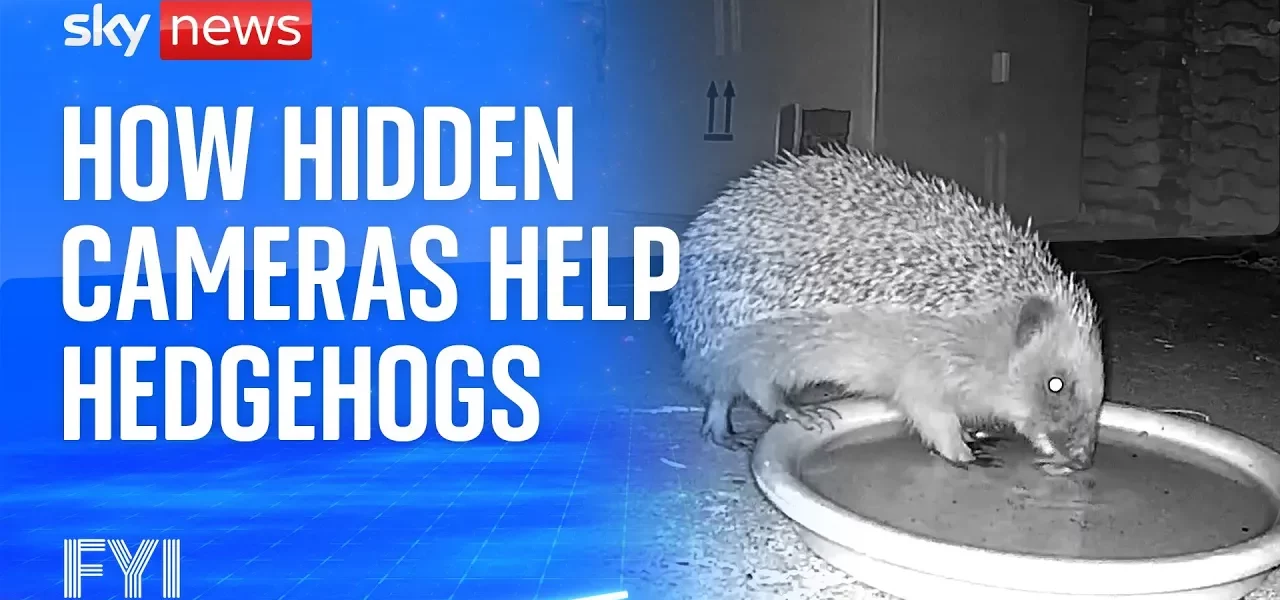How High-Tech Cameras Are Helping Hedgehogs in the UK

Hedgehogs have long been a common sight in gardens across the UK, but their numbers have dramatically declined, particularly in countryside areas. In this article, we explore a groundbreaking hedgehog monitoring project that utilizes high-tech hidden cameras to gather crucial data on these vital creatures. Discover the importance of hedgehogs in our ecosystem and learn how you can help contribute to their conservation.
Introduction to the Hedgehog Decline
Over the last two decades, the hedgehog population in the UK has decreased by as much as 75%, particularly in rural areas. This alarming trend has raised concerns among conservationists and wildlife enthusiasts alike. Hedgehogs are considered an “indicator species,” meaning that their health reflects the overall condition of the environment. Understanding the reasons behind their decline is crucial for implementing effective conservation strategies. As we delve deeper into the initiatives aimed at protecting hedgehogs, we will also highlight the role of technology and community involvement in this vital effort.
The Role of High-Tech Monitoring
One of the most innovative approaches to studying the hedgehog population involves the use of high-tech hidden cameras. These surveillance systems are strategically placed in various habitats to capture images of wildlife, providing valuable data on hedgehog numbers and behavior.
How the Cameras Work
The hidden cameras are designed to be discreet and weatherproof, ensuring that they do not disturb the animals they are monitoring. Here’s how the technology operates:
- Camera Placement: Cameras are placed in protective boxes to shield them from the elements.
- Motion Detection: Equipped with sensors that detect movement and heat, the cameras automatically trigger to capture images when a hedgehog or other wildlife is nearby.
- Night Vision: Infrared sensors allow the cameras to operate effectively at night, during the hedgehogs’ most active hours.
Data Processing and Analysis
After the cameras capture images, advanced artificial intelligence technology is employed to filter and analyze the photographs. This process ensures that only relevant images showing hedgehogs are identified, allowing researchers to accurately assess their populations and distributions.
Community Involvement in Hedgehog Conservation
As part of the national hedgehog monitoring program, volunteers play a crucial role in analyzing the images captured by the hidden cameras. This citizen science initiative encourages people from all walks of life to contribute to hedgehog conservation efforts.
How You Can Help
Individuals looking to support hedgehogs can engage in various activities:
- Volunteer for Image Analysis: Join the national hedgehog monitoring program as a volunteer to help identify hedgehogs from the captured images.
- Create a Hedgehog-Friendly Garden: If you have a garden, consider leaving areas untended with wildflowers and log piles, as these provide perfect nesting sites for hedgehogs.
- Start an Eco Club: Schools can establish eco clubs to promote wildlife conservation efforts, encouraging students to learn about and protect local species.
Urban vs. Rural Hedgehog Populations
Interestingly, hedgehogs appear to be faring better in urban environments compared to their rural counterparts. In cities, increased awareness about hedgehog-friendly practices has led to more gardens catering to their needs. Urban residents are increasingly creating habitats that support hedgehogs, demonstrating the power of community action in conservation efforts.
The Importance of Hedgehogs in Our Ecosystem
Hedgehogs are essential to maintaining biodiversity, serving as both predators and prey within their ecosystems. They feed on pests, such as slugs and insects, helping to control these populations naturally. Additionally, their decline can indicate broader environmental issues that may affect other species.
Nature’s Interconnectedness
By protecting hedgehogs, we are also safeguarding many other species in the ecosystem. This interconnectedness highlights the importance of conservation efforts not just for hedgehogs but for all wildlife. Engaging in practices that support hedgehogs can lead to healthier environments for countless other organisms.
Conclusion
In summary, the decline of hedgehogs in the UK is a pressing environmental concern that calls for immediate action. Through high-tech monitoring, community involvement, and conscious gardening practices, we can all play a part in reversing this trend. Every effort counts, from volunteering for image analysis to creating hedgehog-friendly spaces in our gardens. Let us come together to protect these incredible creatures and ensure their survival for generations to come. Are you ready to make a difference? Join the national hedgehog monitoring program today!
“`




